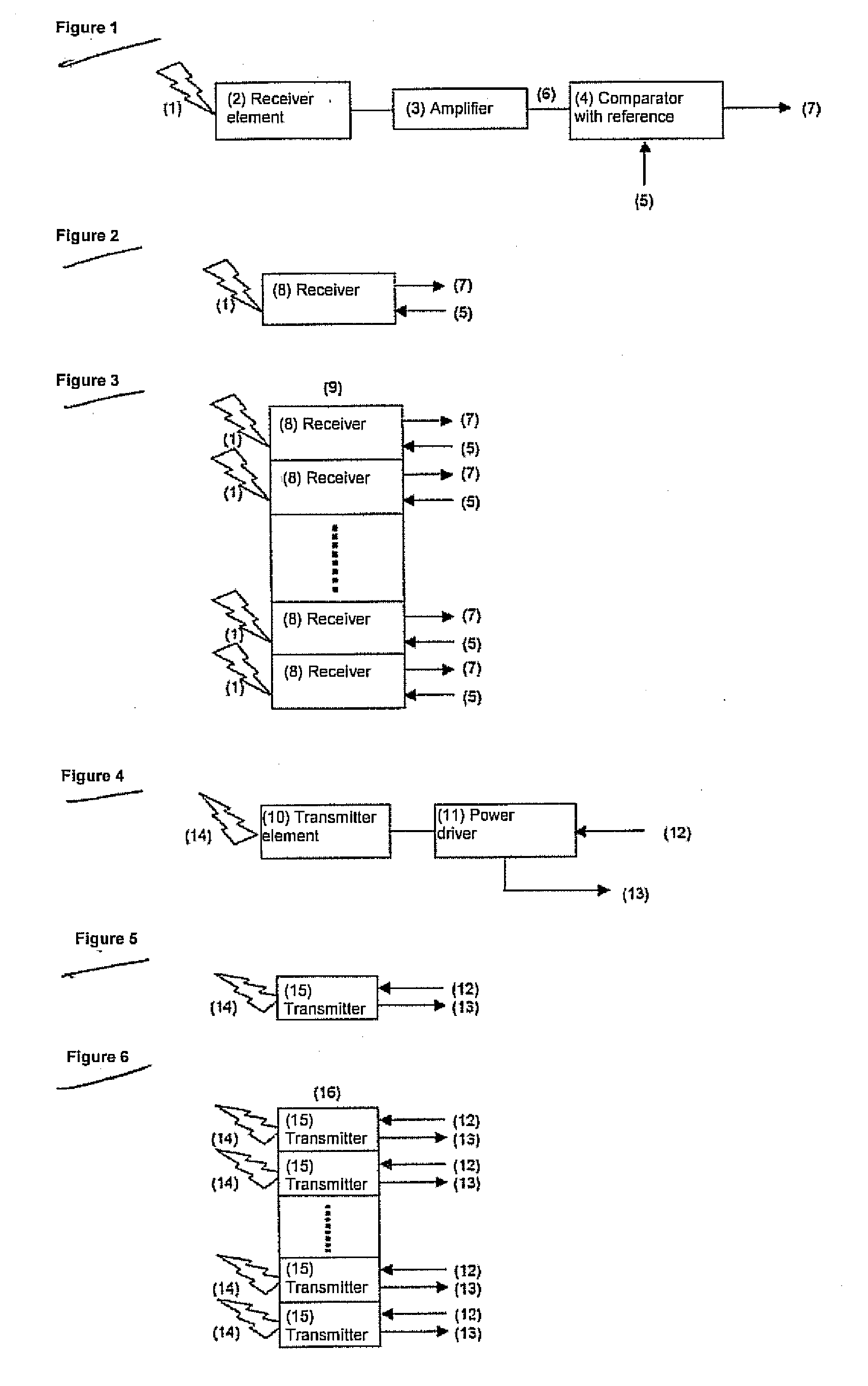Taking distance images
a technology of distance images and distance measurement, applied in the field of distance images, to achieve the effects of increasing sensitivity, increasing measuring speed, and increasing rang
- Summary
- Abstract
- Description
- Claims
- Application Information
AI Technical Summary
Benefits of technology
Problems solved by technology
Method used
Image
Examples
Embodiment Construction
[0092]FIG. 1 shows the basic structure of a receiver comprising an APD (2) with which the optical pulses (1) reflected from a target and received via a receiving lens as a converging radiation system (48) (cf. FIGS. 12a, 21-23) are converted into electrical signals, followed by a broadband amplifier (3) and a comparator (4) with the adjustable reference (5) and the digitized output signal (7).
[0093]The elements of the receiver are assembled in FIG. 2 to form a receiver module (8). The module (8) has the digitized output signal (7) and the reference (5).
[0094]In FIG. 3, the receiver modules (8) from FIG. 2 are assembled to form a receiver array (9) and deliver the input signals (7) for the time measuring channels. If only one laser beam (14) from one laser (10) is present, part rays of an optical pulse (1) reflected by the receiver array (9) are detected. If a plurality of lasers (10) transmit an array of laser beams, then part arrays of the receiver array (9) each detect the beam of...
PUM
 Login to View More
Login to View More Abstract
Description
Claims
Application Information
 Login to View More
Login to View More - R&D
- Intellectual Property
- Life Sciences
- Materials
- Tech Scout
- Unparalleled Data Quality
- Higher Quality Content
- 60% Fewer Hallucinations
Browse by: Latest US Patents, China's latest patents, Technical Efficacy Thesaurus, Application Domain, Technology Topic, Popular Technical Reports.
© 2025 PatSnap. All rights reserved.Legal|Privacy policy|Modern Slavery Act Transparency Statement|Sitemap|About US| Contact US: help@patsnap.com



